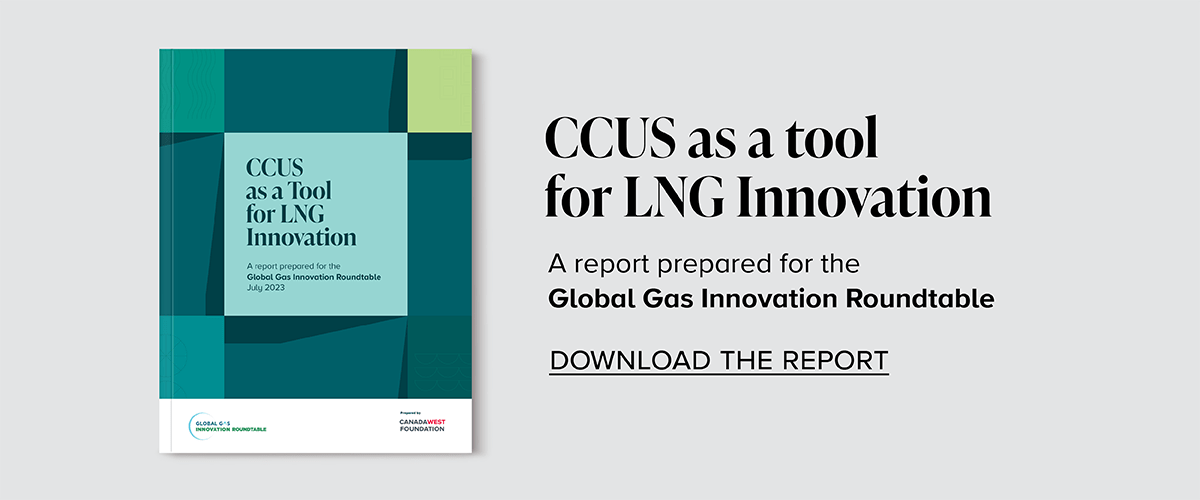A report prepared for the Global Gas Innovation Roundtable
Canada West Foundation | July 2023
Introduction
Purpose of this document
Natural gas and LNG have the potential to lower greenhouse gas (GHG) emissions from end-use when they displace higher-emitting sources, such as coal, that are used for power generation and industrial purposes. However, the production of LNG is very energy-intensive and can produce significant emissions, a fact often used to undermine the downstream benefits.
Several options exist for how LNG producers can lower emissions. These include electrifying operations, fuel switching to hydrogen, and employing carbon capture, utilization and storage (CCUS) to capture CO2 emissions: all promising technologies that fit different circumstances.
This report examines CCUS as a potential path forward for global LNG producers. This report describes what CCUS is, describes how it is being used, how it fits with LNG production, and how governments can support its adoption. The report also presents four case studies that highlight different features of CCUS projects and the factors that lead to success or failure.
But although CCUS holds a lot of promise, it isn’t a perfect solution—so this report also presents the complexities and difficulties, from technology to costs, that make the uptake of CCUS challenging.
About the Global Gas Innovation Roundtable
The mission of the Roundtable is to ensure that governments, policymakers, multilateral institutions and energy thought leaders have a greater understanding of the technology and innovation underway that will improve the performance – environmental and otherwise – of the gas sector.
It will raise the profile of gas technology and innovation through a variety of live and digital touchpoints, including the sharing of leading practices, highlighting emerging technology research and innovation, and profiling the array of events underway at any time around the world.


